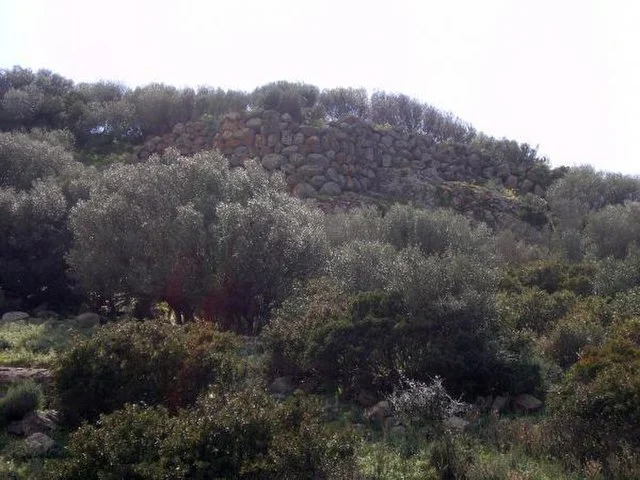Casteddu de Fanaris is a Nuragic archaeological site located in Sardinia, Italy. It dates back to the Bronze Age, a period that stretched from approximately 1800 BC to 1000 BC on the island. This site belongs to the Nuragic civilization, known for its megalithic structures, which include the Nuraghe towers, village complexes, and sacred wells.
Get your dose of History via Email
Historical Significance
The Nuragic civilization flourished in Sardinia during the Bronze and Iron Ages. Casteddu de Fanaris is one of the many settlements that exemplify the architectural and cultural advancements of this time. Nuragic architecture, particularly the construction of stone fortifications and religious structures, reflects the socio-political complexity of the society.
Casteddu de Fanaris is notable for its well-preserved defensive walls and residential structures. The village was likely used as a strategic point due to its elevated position, offering a clear view of the surrounding landscape. This strategic placement allowed inhabitants to protect their community from potential invaders.
Architectural Features
The site features the typical elements of Nuragic architecture, including large circular stone buildings. These structures were often multi-level, with a central tower known as the nuraghe being the focal point. At Casteddu de Fanaris, remnants of these structures are still visible, although many have suffered from erosion over time.
The nuraghe served both as a defensive stronghold and as a symbol of power within the community. The surrounding buildings likely housed families and were connected by stone-paved pathways. These complexes indicate the presence of a tightly-knit community with shared social, religious, and economic practices.
Archaeological Discoveries
Excavations at Casteddu de Fanaris have unearthed a variety of artifacts, including pottery, tools, and weaponry. These findings provide insight into the daily life and culture of the Nuragic people. Pottery discovered at the site often features intricate designs, showing that the Nuragic civilization had developed advanced craftsmanship skills.
Archaeologists have also found evidence of trade with other Mediterranean cultures. Items such as imported ceramics suggest that Casteddu de Fanaris was not isolated but part of broader economic networks. This connection with external societies highlights the role Sardinia played in the wider Mediterranean world during the Bronze Age.
Preservation and Study
Casteddu de Fanaris remains a site of interest for both historians and archaeologists. Ongoing excavations and research continue to provide valuable information about the Nuragic civilization and its role in prehistoric Mediterranean history. Preservation efforts have been made to protect the site from further degradation, allowing future generations to study this important historical landmark.
The site’s importance lies not only in its architectural remains but also in its contribution to our understanding of early European societies. By studying settlements like Casteddu de Fanaris, researchers can better comprehend the socio-political and cultural dynamics that shaped the ancient world.
Conclusion
Casteddu de Fanaris is a key site for understanding the Nuragic civilization and its impact on Sardinian history. Its strategic location, architectural sophistication, and material culture provide significant insight into life during the Bronze Age. As research continues, the site promises to reveal more about the complex social structures and external connections of Nuragic Sardinia.
Source:

